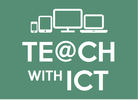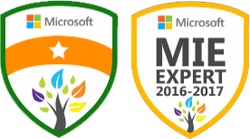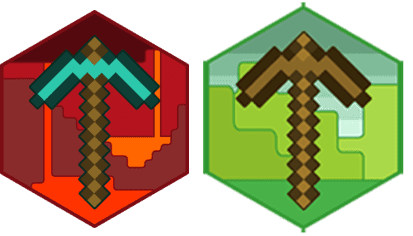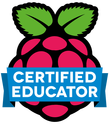|
Teaching Computer Science - Day 20: Sitting on the shelf. Over the last couple of lessons, I have been covering with my students the topic of Software. For this unit, students are expected to know about operating systems, utility programs and application software. In this final lesson on software, I explored custom written, off the shelf, open source and proprietary software. Learning Objectives:
Lesson 1: Theory (Types of Software) Suggested time: 50 mins Starter I started by showing students a video by Stephen Fry in which he talks about free software. Main: I explained to students that the software in the previous clip is referred to as open source software and that this is just one of several ways in which we can source software. I explained that some software, such as open source, is free and that some software can be changed to suit the users needs. I also explained that if a piece of software doesn’t already exist, we can pay to have it custom built specifically for our needs. I gave students a list of links (see below) and asked them to create some revision notes on the following different types of software:
I also explained that, in their notes, I wanted the students to compare custom built to off the shelf software and open source vs. proprietary software. Once students had compiled their notes, I asked them to attempt the following exam question: Q.1. Karen wants to use handheld computers to take customers’ orders in her restaurant. She is thinking of using custom written, open source software. 1. State what is meant by custom written software. (1 mark) 2. State two reasons why Karen may decide to use custom written software. (2 marks) 3. Discuss the implications of creating open source software for the restaurant. (6 marks) * * The quality of written communication will be assessed in your answer to this question. Answers:
Plenary: I displayed the sample exam question on the board and picked students at random to go through the possible answers. To ensure that everyone was engaged, I used the Pose, Pause, Pounce and Bounce questioning strategy: Example: Pose a question to the whole class e.g. Explain what is meant by custom written software. Pause to give students time to digest the question and think of their answer. If the students are engaged, try holding the pause for a little while longer to build up the tension. Pounce: Quickly, select a student to answer the question. i.e. Insist the answer to the question comes from student A and possibly student B, directly and fast! Obviously, plan in your mind who you are going to direct the questions to before hand. Bounce the question or student's response on to another student (immediately after the pounce). e.g. Ask them if they agree with the students previous answer and to explain why. For more information about the Pose, Pause, Pounce and Bounce technique, visit: @teachertoolkit - http://teachertoolkit.me/2013/01/04/pppb-version2/ Resources: Stephen Fry talks about free software - In this video, Stephen Fry talks about open source software What is Open Source? - This introductory video explains what open source software actually is, why it matters, and throws in a bit of history as well. Types of Software PowerPoint - Click on Software, followed by Lesson 3 – Types of Software Teach-ICT (Types of Software) Lesson 2: Test Suggested time: 50 mins Main: I issued each student with a test covering the topics in unit 2.1.3 (Software) of the OCR GCSE specification. The test is based on sample assessment material and past exam papers released by OCR. (Click on link below)
Plenary: I asked students to swap papers and went through the answers. I also explained to students the model answers using the marking criteria (See below)
In this week’s lesson, I continued the theme on software and introduced students to the next topic - Utility programs. Learning Objectives:
Lesson 1 & 2: Theory (Utility software) Suggested time: 100 mins This week, I decided to take on a different approach. Instead of the usual teacher led lesson, I thought I would encourage my students to de a bit of self-study. To facilitate this, I used the resources freely available on the Cambridge GCSE Computing website. Task 1: I directed the students to the Cambridge Computing website http://www.cambridgegcsecomputing.org/software-main#top and instructed them to watch the videos on the three different types of utility software and to complete the quiz at the end of each section. After completing all three sections, I asked students to make notes on each of the three types of utility software. Task 2: Once students had finished making their notes on each of the three types of utility software, I directed them to Moovly.com and asked them to watch the introductory video. If you haven’t use Moovly before, Moovly is a powerful web 2.0 tool for creating animated presentations. Moovly is free to use and enables you to create stunning animated videos that you can share online. After watching the introductory video, I instructed the students to create an animated presentation, for the class revision wiki, on the three types of utility software. I also explained that they would be presenting their Moovly to the rest of the class at the end of the lesson. (See example below) Plenary: Once everyone had finished and checked their Moovly presentations for errors etc., I asked each group to present one of their topics to the rest of the class. I used a random name selector (see blog post) to choose each group and topic at random so that we covered each topic at least once. Homework: I instructed students to upload their Moovly presentations to their revision wikis. Resources: Utility Software PowerPoint - http://www.pwnict.co.uk/computingGCSE/computingResources.html (Click on Software, followed by Lesson 2 – Utility Software) OCR - http://www.cambridgegcsecomputing.org/software-main#top Teach-ICT - http://www.teach-ict.com/gcse_computing/ocr/213_software/utilities/miniweb/index.htm Moovly User Guide - http://www.moovly.com/uploads/faq/moovly_user_guide.pdf 24/4/2014 GCSE Theory ResourcesYou have probably noticed that it has gone a little quiet of late on my Computing Blog. This is mainly due to the fact that my students are currently completing their first controlled assessment task and therefore there is not much to report. However, in the meantime, here is a collection of resources I have collated to help you teach the Computing theory element at GCSE level.
Programming Card trick - Simple card trick (Courtesy of Mark Dorling - Digital School House) to teach Algorithms. The purpose of the card trick is to teach pupils about sequencing and modelling a sequence of instructions. Teach-ICT (Algorithms) - Resources to support the teaching of Programming theory at GCSE level. Cambridge GCSE Computing (Programming) - This topic will test the learners' understanding of fundamental programming concepts which are common to most imperative languages. Computing Hardware General How computers work - Activity, courtesy of CS Unplugged, which provides students a basic understanding of how computers work by having them act out a simple computer simulation. Your PC, inside and out: Part 1 - (Free download courtesy of makeuseof.com) In this guide Lachlan Roy breaks the computer down into its different components. For each component he describes its function, talks about best brands on the market, explains the different specifications to look out for and provides a bit of history, too. Part 1 focusses on the motherboard. Your PC, inside and out: Part 2 - (Free download courtesy of makeuseof.com) Part 2 highlights everything you need to know about CPUs, storage devices, memory, graphics cards and other computer components. Memory How many bytes in a Megabyte - Why is one kilobyte equal to 1024 bytes and not 1000 bytes? This article explains why. How stuff works - Computer memory - How stuff works article on how memory works (also contains several related articles and quizzes) The difference between RAM and ROM – Part A (Cambridge GCSE Computing Online) The difference between RAM and ROM – Part B (Cambridge GCSE Computing Online) GCSE Computing.net – Memory Teach-ICT – Memory PWN ICT (Click on Hardware and then Memory) Storage devices Storage devices top trumps - Lesson on storage devices using the classic game - top trumps. RI Christmas Lecture 2008, Lecture 3: The Ghost in the machine, part 2 - Explanation of how a hard disk works – Fast forward to 12 min 30 sec. How a CD works - Video explaining how a optical devices work. How a hard disk works - Animation showing how a hard disk works. CPU Fetch Execute Cycle - Animation explaining the Fetch Execute Cycle. CPU DART Activity - For those new to DART (Directed Activity related to Text), this activity is designed to support literacy. It focuses on the strategies of skimming, scanning and gap fill. The purpose of this DART activity is to give the students a brief overview of the main features of the CPU. Mr. Clarkson talks about… The CPU - Video from a Computing at School Master Teacher explaining all about the CPU. Teach-ICT – CPU PWN ICT (Click on Hardware and then CPU) Binary Logic All very logical - Interactive activity on logic gates courtesy of the Royal Institute. Logic gates using toys - Youtube video demonstrating how you can use every day items such as dominoes and marbles to teach logic gates. Representing Data Units of Data Units of Data Measurement (60 second Mind Meld) - Bit, Nibble, Byte, Kilobyte etc . . . all explained in face-paced 60 second tutorial. Teach-ICT - Representing Data OCR - Representation of data in computer systems Definitions of units - Cambridge GCSE Computing Online. Binary to Denary Counting the dots - A fun and engaging activity from CS Unplugged on Binary numbers. (Supporting video) Binary Addition and Subtraction 1 + 1 = 10 - Lesson on Binary Addition and Subtraction CISCO Binary Game Binary Calculator Binary Arithmetic Task Hexadecimal It's all about Hex! - Lesson on Hexadecimal. Includes Hex to Binary and Hex to Denary conversion. Hexadecimal to Decimal - Video explaining how to change Hexadecimal to Decimal numbers. Binary representation of Images It's a Cracker! - Festive themed lesson explaining how a computer stores images. Colour by Numbers - This activity, courtesy of CS Unplugged, explores how images are displayed based on the pixel as a building block. Binary representation of Characters Representation of text - Explanation of how characters are represented in a computer system. Ascii text to Binary converter Ascii Binary conversion chart Text to Ascii and Binary converter Binary representation of Sound Everything is Sound! - Lesson on how sound is represented and stored on a computer system. Sound in Binary – Set of resources explaining how sound is stored on a computer including sample audio tracks compressed at different sampling rates. (Click on 2.1.4 representation of data --> Lesson 5 Sound in Binary) Classzone – Frequency / Amplitude simulator Binary representation of sound worksheet – Excellent worksheet courtesy of Emma Partridge (via CAS). Extract from the CHRISTMAS LECTURES 2008: Chris Bishop - The Ghost in the Machine showing how sound is stored on a computer (Skip to 13:40). Binary representation of Instructions Following Instructions! - Lesson on how binary can be used to store instructions. Teach-ICT (Binary representation of Instructions) - Resources to support the teaching of Binary Representation theory at GCSE level. Software Operating Systems All systems operating - Lesson on Operating Systems. Operating Systems – Introductory video on Operating Systems. PWNICT: Operating Systems – PowerPoint explaining the purpose of the Operating System. (Click on Software, followed by Lesson 1 - OS) BBC Bytesize (Operating Systems) Teach-ICT (Operating Systems) Utility Software Cambridge GCSE Computing (Software) - This group of videos, presented by Julie Hodgson, looks at the purpose and use of common utility programs Teach-ICT (Utility Software) Types of Software Stephen Fry talks about free software - Video in which Stephen Fry talks about open source software. Teach-ICT (Types of Software) Computer Communications and Networking Network Simulator - This great online flash based simulator allows students to create their own network without having to tear-apart your schools network! Teach-ICT (Networks) - Resources to support the teaching of Network theory at GCSE level. Database Theory Teach-ICT (Database Concepts) - Resources to support the teaching of Database theory at GCSE level. Cambridge GCSE Computing (Databases) - Resources to support the teaching of the Database theory element of the OCR GCSE Computing specification. General Books GCSE Computing - This excellent textbooks by Susan Robson are endorsed by OCR & AQA and cover the full specification for both GCSE Computing theory unit. OCR Computing for GCSE - Written by examiners and experienced teachers, this book covers the theory unit swell as the two controlled assessment units for OCR specification. Useful Websites Teach-ICT (Computing) - Resources to support the teaching of Computing theory at GCSE level. GCSEComputing.net - Set of excellent teacher notes to support the delivery of both the OCR and AQA theory elements. Computing At School (CAS) Online - Online community dedicated to teaching Programming / Computer Science in school. Contains a wealth of resources including Schemes of Work, Tutorials and discussions on best practice. Computer Science Unplugged - CS Unplugged is a collection of free learning activities that teach Computer Science through engaging games and puzzles that use cards, string, crayons and lots of running around. |
AuthorSimon Johnson Microsoft Innovative Educator Expert / MIE Trainer
Minecraft Cert. Educator / Global Mentor
CAS Master Teacher
Raspberry Pi Cert. Educator
Tickle Ambassador
Archives
June 2017
CategoriesAll Algorithms Cpu Fundamentals Hardware Input & Output Memory OCR A451 Software Storage |
||||||||||||||||||
Search by typing & pressing enter






 RSS Feed
RSS Feed
